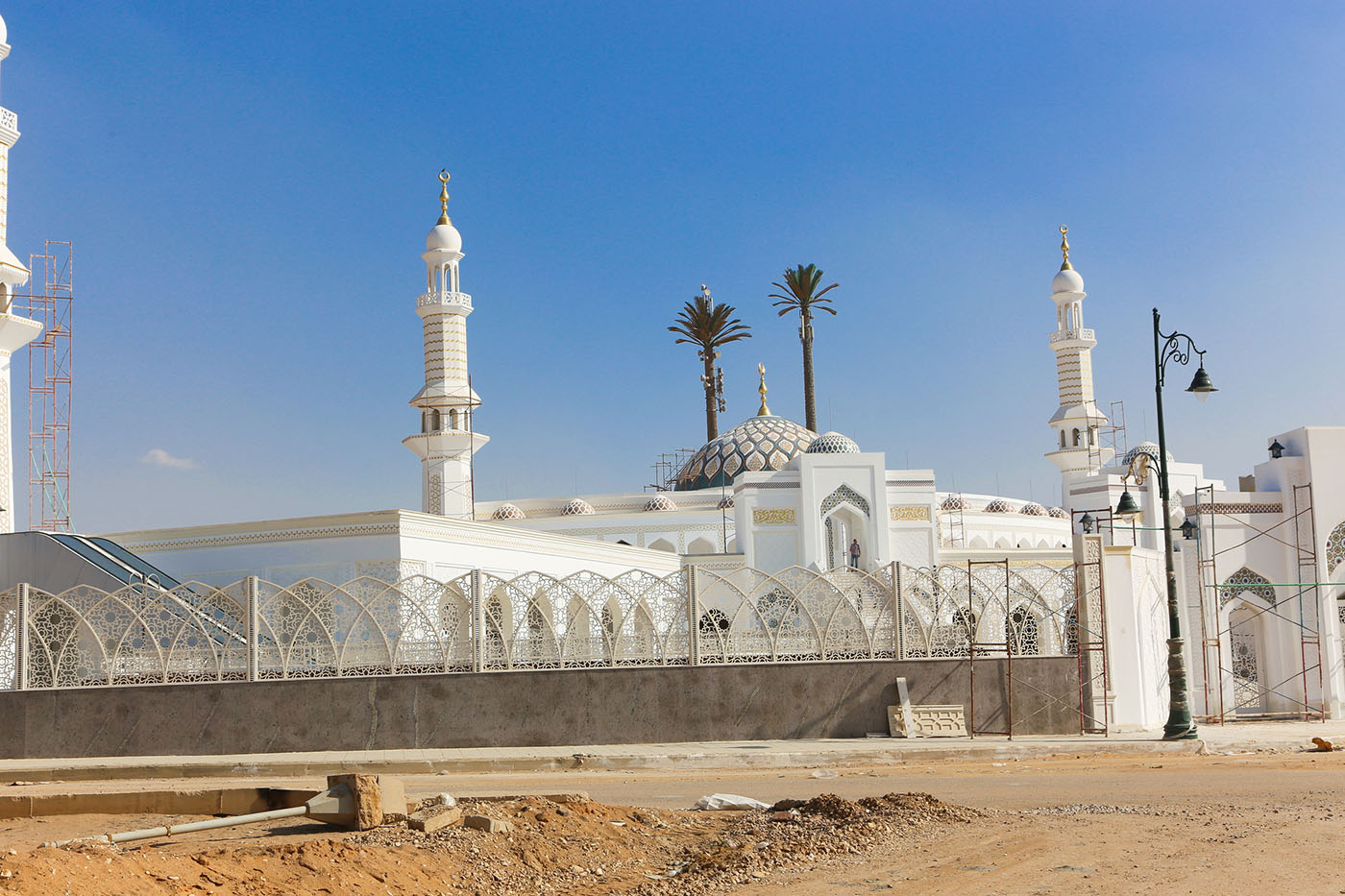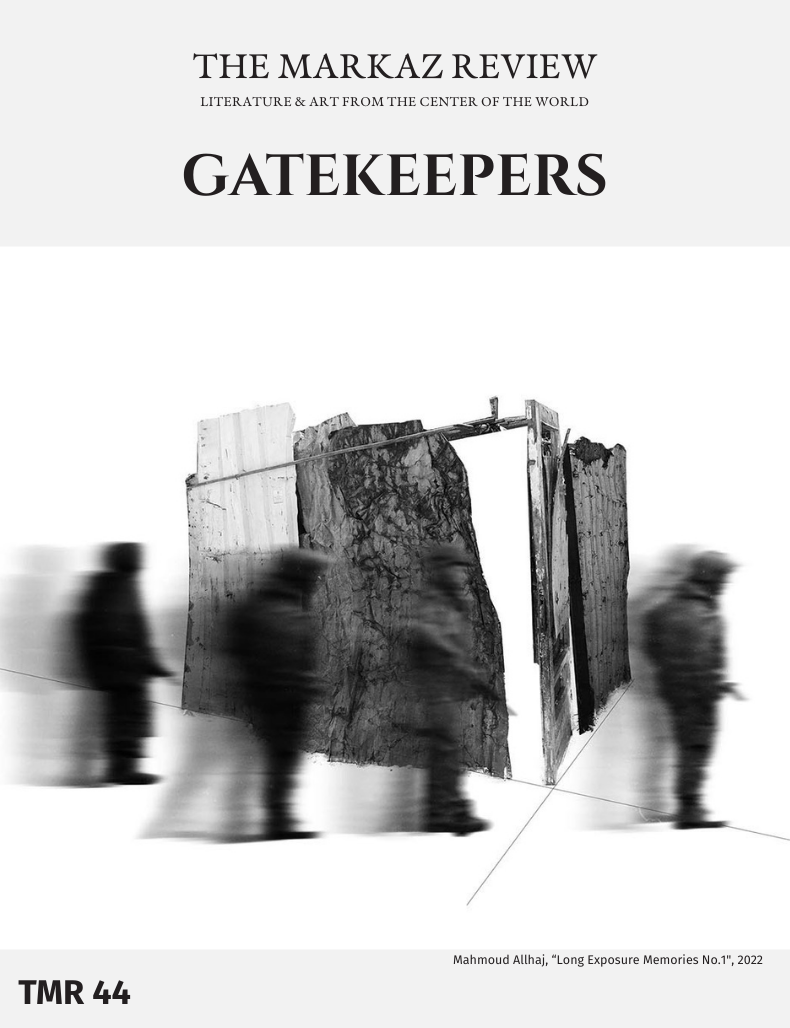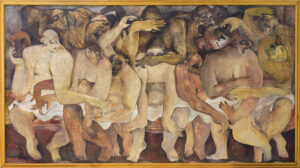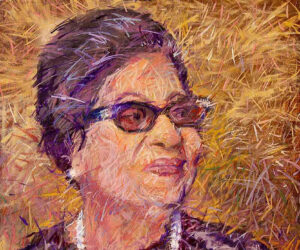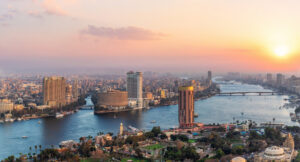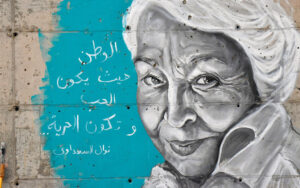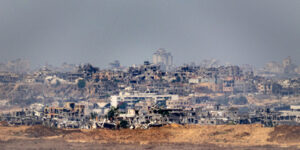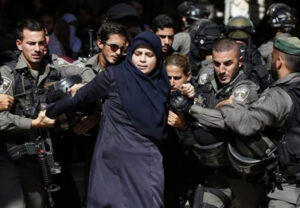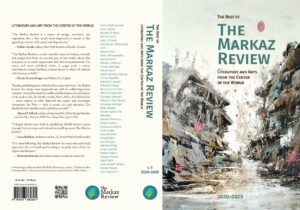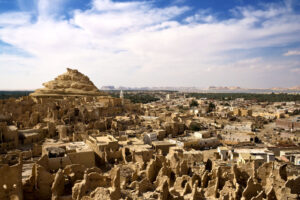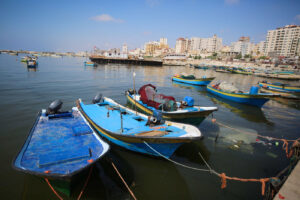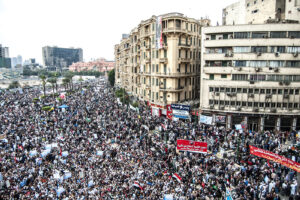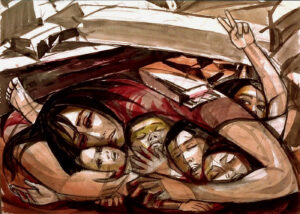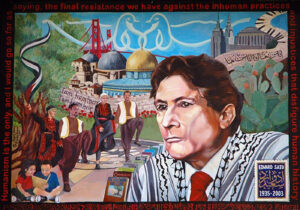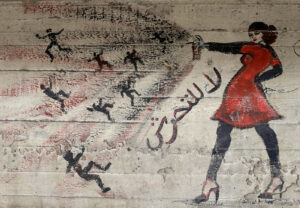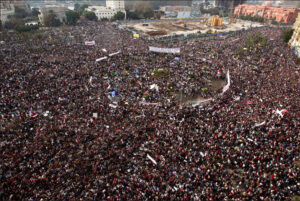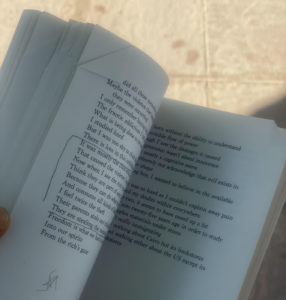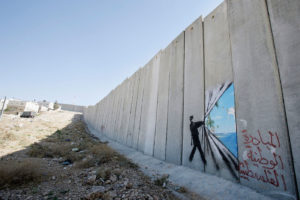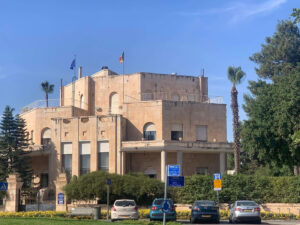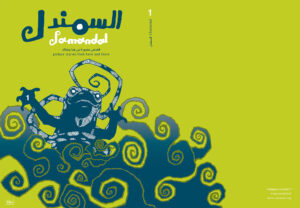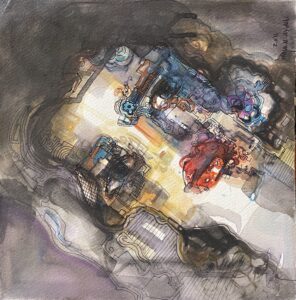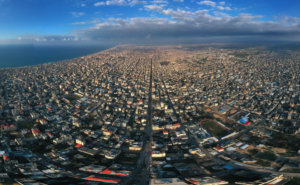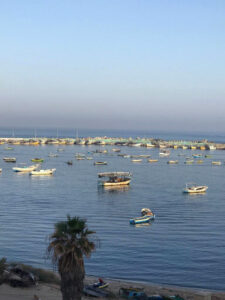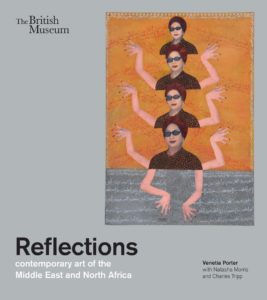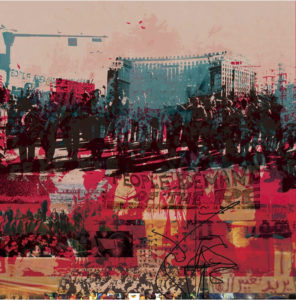In Egypt Under El-Sisi, Maged Mandour argues that the president's administration signifies a pivotal moment in Egyptian history, suggesting that El-Sisi has drawn valuable lessons from past mistakes and meticulously constructed a comprehensive system of barriers to forestall a recurrence of events reminiscent of those that transpired in 2011.
Egypt under El-Sisi: A Nation on the Edge, by Maged Mandour
I.B. Tauris/Bloomsbury 2024
ISBN 9780755649150
Myth and reality, the so-called “Arab Spring” that spread to Egypt in 2011 was in many ways a failed revolution. Those who initiated the mass protests, and the civil society actors who organized around it had hoped for more societal participation in political affairs, more freedom, and a better life in general — the kind of life that had been denied them under the corrupt and authoritarian Mubarak government. Today, Egypt is perhaps further removed from democracy and human rights than ever before. However, the process of revolution was a big success for Egypt’s current dictator, Abd al-Fattah El-Sisi, as political analyst Maged Mandour points out in his book Egypt under El-Sisi: A Nation on the Edge: A comprehensive study of Egypt’s system of fear. Using numerous references to several primary sources, Mandour’s study provides compelling insight into how El-Sisi’s exercise of power works, convincingly explaining how his rule differs from that of his predecessors and how he reshapes the power apparatus to consolidate the regime in ways reminiscent of an Orwell novel. Unfortunately, this is not a dystopian fiction, but a dystopian reality that is often overlooked in Western reporting.
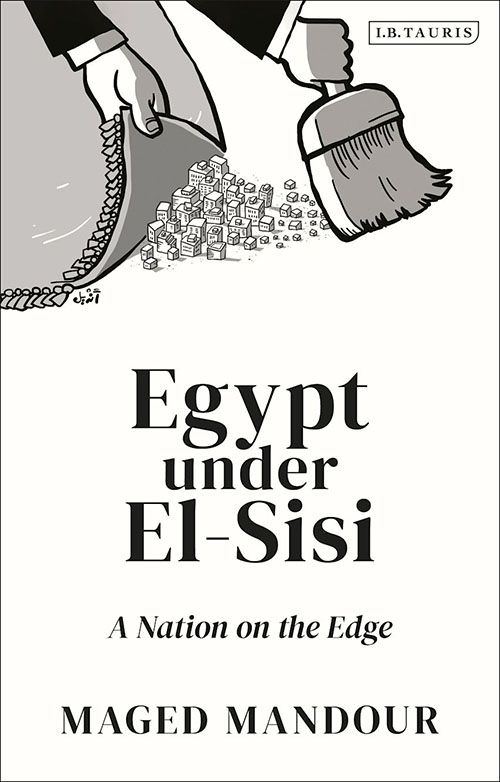
Mandour avoids the common mistake of romanticizing the previous Egyptian presidents and their terms of office as he affirms El-Sisi’s authoritarianism. Rather, he conducts a comparison of the governing styles of different rulers from Gamal Abdel Nasser to Mohammed Mursi to that of El-Sisi, analyzing similarities and differences between the various regimes. Mandour comes to the conclusion that El-Sisi’s government represents a turning point in Egyptian history, a regime led by dual aims: not only to consolidate power within the military junta but also to erect permanent obstacles to democratization. It can be argued that El-Sisi learned from the mistakes of his predecessors, creating a legacy whose main achievement is the complex structure of barriers he built to prevent a repeat of events like those of 2011.
While Mandour correctly points out that the government of Mohammed Morsi was Egypt’s only democratically elected government, he doesn’t refrain from criticizing the political actions of the Muslim Brotherhood and how their attempt to monopolize power ended up alienating other civil society forces. In this, we see a political problem that often follows the rise to power of Islamic or Islamist parties, whereby all other parties can be deemed “un-Islamic” according to their standards, making plurality or coalition building difficult and sometimes impossible.
Ironically, this is also the approach El-Sisi adopted to defame the Muslim Brotherhood. Mandour refers to a Twitter post by Egypt’s Dar al-Ifta (an institution responsible for issuing Islamic legal opinions), in which they call the Muslim Brotherhood the “Khawarij” of the current era and thus deems the fight against them to be the “highest form of jihad.” The Khawarij were a group in the early days of Islam known for their extremist and intolerant interpretation of the religion, and thus the tweet by Dar al-Ifta was an attempt to delegitimize the Muslim Brotherhood as an extremist sect that is not recognized as “truly Islamic.”
In the first days of the coup d’état, El-Sisi was portrayed by several Western media outlets as a secular counterpart who’d managed to oust the fundamentalist Mohammed Morsi and his Muslim Brotherhood from power. This representation is, of course, nothing but a convenient fiction. El-Sisi in fact liberally uses Islamic rhetoric and exploits Islamic institutions to assert his power over the Egyptian population, which is majority conservative Sunni. As such, there is little that is “secular” about his regime.
Still, the assumption persists, owing to the distorted picture painted by many Western media outlets in the aftermath of El-Sisi’s coup. Mandour cites numerous quotes from the dictator in which he speaks of “divine support,” justifying and underpinning his exercise of power by language that stylizes his regime as one divinely chosen. This was a strategy also employed by Gamal Abdel Nasser during his term in office, when he similarly cracked down violently against the Muslim Brotherhood and had them imprisoned, claiming that the group was exploiting Islam for their own gain. Mandour describes El-Sisi’s dictatorship as a new variant of Nasserism that departs from the original’s emphasis on social justice, anti-imperialism, and mass mobilization and instead highlights its most authoritarian features.
The current regime’s use of violence is a central strategy of the way it maintains power and control, surpassing even the violence of Mubarak’s era. The lesson El-Sisi learned from his predecessors is that increased violence is essential for the regime’s survival. To avoid a repeat of the 2011 protests, which overwhelmed and led to the collapse of security forces, his regime implemented a plan for urban control. It restructured the city’s landscape, relocating the urban poor away from government centers and developed a transportation network specifically designed to help security forces suppress protests more easily. Mandour describes the exercise of state violence as the “glue” that keeps the current system from collapsing and the key element in controlling public discourse.
Although the book’s scope doesn’t extend to the current war on Gaza and Egypt’s role in it, Mandour’s analysis is very much upheld by the violent repression of pro-Palestine protests and imprisonment of pro-Palestinian voices in Egypt. The El-Sisi regime fears any and every spark of dissent, regardless of whether it directly targets the regime itself or not. Since the regime presents itself as the guardian of the Egyptian nation (and as the true embodiment of Egyptian nationalism), it is therefore “justified” in suffocating any dissent at its roots, interpreting it as an attack on the nation. As such, extreme nationalist parties are no different from extremist Islamist ones (even though El-Sisi uses both components to control public discourse). Nationalist parties present themselves as pre-eminent representatives of the nation, and everything and everyone who doesn’t subscribe to their doctrine can thus be dismissed as a traitor to the nation.
A decade into El-Sisi’s reign, it appears that the regime has succeeded in consolidating its military rule and preventing any and all processes of democratization. But, as Mandour explains, meeting any discontent with repression makes the regime vulnerable in the long run, because repeated economic crises and increasing poverty can only be denied solution and met with suppression for so long.
Although the book makes clear from the outset that the regime’s international relations won’t be directly addressed, readers can nonetheless infer certain aspects from the comprehensive picture presented of the regime’s ideology and self-image. However, one criticism that might be leveled at the book is that an analysis of the current Egyptian regime that focuses mainly on the internal situation and ignores the international context provides an incomplete overview of how Egypt is being ruled. Important factors such as foreign government support, economic interdependencies, external political influences, and security dynamics are essential to a more comprehensive understanding (though Mandour does indeed address Egypt’s debt situation and its role in international investments in the fourth chapter of his book).
It would hence be interesting to see a little more analysis on the international attitude and power dynamics that underpin El-Sisi’s rule: Why is there little criticism from Europe, the USA, or Canada when it comes to human rights violations and state violence in Egypt? What international geopolitical power interests helped uphold El-Sisi’s coup? Mandour, on the other hand, does answer these questions, at least partially, in articles and interviews published on news platforms such as Middle East Eye or the Rosa Luxemburg Stiftung. He concludes that European companies benefit greatly from Egypt’s debt-driven megaprojects. For example, the German company Siemens has profited from a multibillion-euro agreement to build power plants in Egypt. These projects create lucrative opportunities for European firms. Mandour also mentions this in his book, though he could have highlighted more — as he does in his articles — that “Western values” appear to take a backseat when countries like Germany see economic advantages in collaborating with a military dictator who disregards human rights. In his article for Middle East Eye, Mandour also points out that, although migration isn’t the main reason for the EU’s “strategic partnership” with Egypt, it does provide a way for the EU to involve Egypt in its efforts to control and manage migration — an important issue not addressed in the book. Nevertheless, Mandour’s study is an authentic analysis of El-Sisi’s system of fear from an Egyptian perspective, and it is worth reading the author’s texts published online to get a more nuanced picture of Egypt’s political situation.



